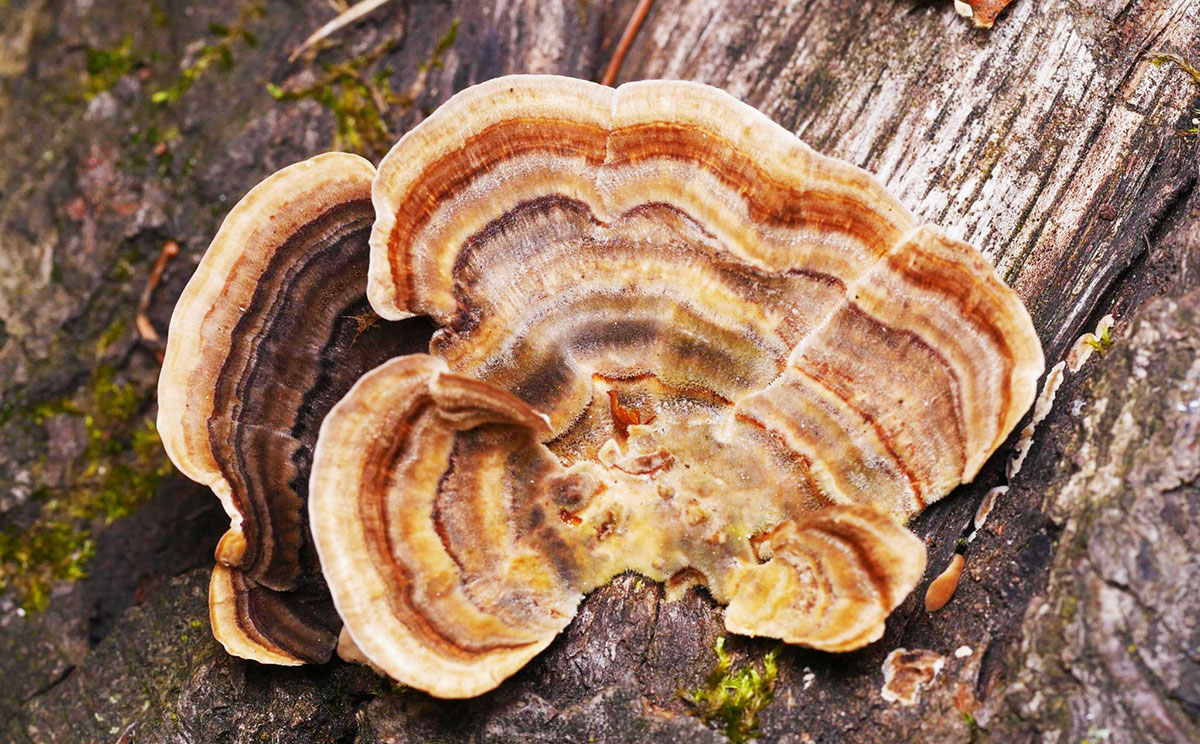 |
  
|
Do Functional Mushrooms Function?Skeptoid Podcast #986  by Brian Dunning Today we're going to have a look at a very profitable food fad: functional mushrooms. The global functional mushroom market currently stands at about $36 billion dollars, and is projected to grow at a compound annual growth rate of 8.8% until it more than doubles its current size by 2033. Functional mushrooms — whether they're sold in coffee, energy bars, supplement pills, or processed into packaged food products — are very big business. So the rest of us want to know: What are the people buying them hoping to achieve? The basic definition of a functional mushroom is that it is (a) not psychedelic, and (b) provides some health benefit beyond the nutritional value. Mushrooms are probably better nutritionally than most people think. They contain protein, B and D vitamins, some minerals, they're a good source of fiber, and they are very low in calories. Now, granted, all these nutrients are indeed there; but in very low concentrations. If you look at the USDA Nutrition Facts label for a mushroom, it's zero all the way down the line; with perhaps a shaky 1% for potassium and protein. After all, they're just fungus. And that is, itself, an interesting question. Where does a mushroom's content come from? We've all watched time lapse videos of mushrooms growing. They seem to spring up from nothing. They grow and expand and fruit, and develop a full, bulky body — while having no photosynthesis, no roots, and no evident way to take material out of their environment to metabolize and build their own body. It seems they just materialize out of thin air. The reason a mushroom grows apparently from nothingness is that you can't see where it's getting its nutrients from. Before the mushroom itself appeared, the fungus was there and alive. It was inside the ground, inside the log, inside the manure, inside whatever carbon-rich substrate is there. It forms a mycelium network, which sends threadlike hyphae throughout the substrate. The mycelium releases hydrolytic enzymes such as cellulase to break down the substrate's polymers into sugars and amino acids, and the hyphae absorb and transport these. So, in fact, a mushroom does have roots of a sort; just nothing like those of a tree. The mycelium might stockpile all these nutrients for weeks, until one day it produces a fruiting body. And this is what a mushroom is: the fruiting of a mycelium. This is why a mushroom, with no obvious source of food, gives the impression of appearing and growing out of thin air. So we see that it's perfectly rational for a mushroom to have decent nutritional value. But proponents assert that a functional mushroom also confers health benefits beyond just this. What benefits are those? Well, unfortunately, claims are generally pretty vague. They're part of a whole trend of so-called "functional" foods, which are generally conventional foods fortified with some supplement or popular wellness-associated ingredient. You need not go far to find functional dairy, functional eggs, functional oils, functional cheese, functional snacks, functional beverages, functional margarine, even functional processed meats; so we should not be surprised to find functional fungus. The basic process we take to assess the claims made about these products is in three steps:
So we find ourselves faced with these three peaks to conquer, each seemingly more insurmountable than the last. But at least it gives us a roadmap for our journey of discovering the truth behind functional mushrooms: Do they indeed convey some health benefit beyond their known and established nutritional benefit; or, are functional mushrooms nothing more than what a cursory skeptical glance would tell us they are — regular mushrooms with a tiny but measurable nutritional benefit? Let's begin by having a look at which mushrooms are proposed to be functional. The top six that are all over the Internet (along with their primary claim to being functional) are:
And just to be clear, I've listed only one claimed benefit for each that was, as far as I could tell, unique to that particular genus of mushroom. All of them have many, many other claims, all of which are made for all of them and all of which are of the uselessly vague variety: boosting your immune system, supporting a healthy heart, etc. Most of these claims for functional mushrooms are as treatments for diseases. If you don't have that disease, you've no reason at all to eat them beyond their culinary and nutritional value — which is reason enough; it's not necessary to ascribe any nutraceutical value to them. But these claims are all pharmacologically plausible. A huge number of drugs on the market today come from molecules found in nature, and some are even derived from molecules that did come originally from fungi such as mushrooms and molds. Perhaps the best known example are statins, the drugs typically used to reduce cholesterol. Fingolimod, a drug used to treat multiple sclerosis, came from a fungus. Mycophenolic acid, an immunosuppressant for organ transplant patients, was isolated from fungi in the Penicillium genus. Even a class of antifungal drugs, echinocandins, was originally derived from fungi in the Aspergillus and Coleophoma genera. And this list goes on and on and on. Thus it's not just plausible, but actually likely that fungi such as lion's mane, reishi, chaga, Cordyceps, and turkey tail do contain molecules that could lead to new drugs. But — and this is a very important but — simply eating a mushroom is not the same thing as taking a drug derived from a molecule in that mushroom; not even close. Even if the drug works, eating the mushroom would probably have no effect at all. Here's why. When a microbiologist identifies a molecule and isolates it, they then have produce enough of it to test it against pathogens. This is a lengthy and complex process. Then it's tested against all kinds of pathogens to see where it might be effective. Then it needs to be purified, standardized, and concentrated so that safety testing can be done, side effects identified, and dosages established. This way, when you take the final drug product, we know exactly what you're getting. We know that it's safe and what it targets and how. Conversely, when you just eat a mushroom, you're ingesting a complex mixture of nutrients, fibers, and a variety of bioactive compounds, some of which may have the desired pharmacological effect, while others could be inactive or even harmful. The desirable molecule is only present in extremely low and variable amounts that will change from mushroom to mushroom depending on things like growing conditions and preparation methods, as well as simple individual variability. Eating a mushroom in hope of gaining a medicinal benefit would be akin to taking an aspirin tablet, compared to dropping one into the mud and scooping up and swallowing a whole handful of that mud. Moreover, when we go back and look at our five mushrooms and their claimed benefits against certain diseases, these benefits are not even proven. Studies supporting the claims do exist in many cases, but they are generally small, low quality, and not replicable. When they are, rest assured that companies will fall over themselves to turn those molecules into useful drugs. So when we look at the products for sale today — coffee, hot chocolate, creamer, energy bars, it's a long list — you can rest assured that they will not treat any disease, including those for which some evidence has been found for effectiveness when the contained mushroom's molecules are isolated and processed into controlled drugs. But here's the main thing: People are not buying these products because they are trying to treat a disease! They are buying them because they've been duped by wellness industry messaging using medically meaningless terms like "boosts your immune system" and "supports cardiovascular health." A cookie does those things too, because it also has nutritional content. Functional mushroom food products are unlikely to do you any harm, so if you enjoy them, fantastic. Eat up. But please don't suppose these allegedly "functional" properties will do anything for you at all. They won't.
Cite this article:
©2025 Skeptoid Media, Inc. All Rights Reserved. |